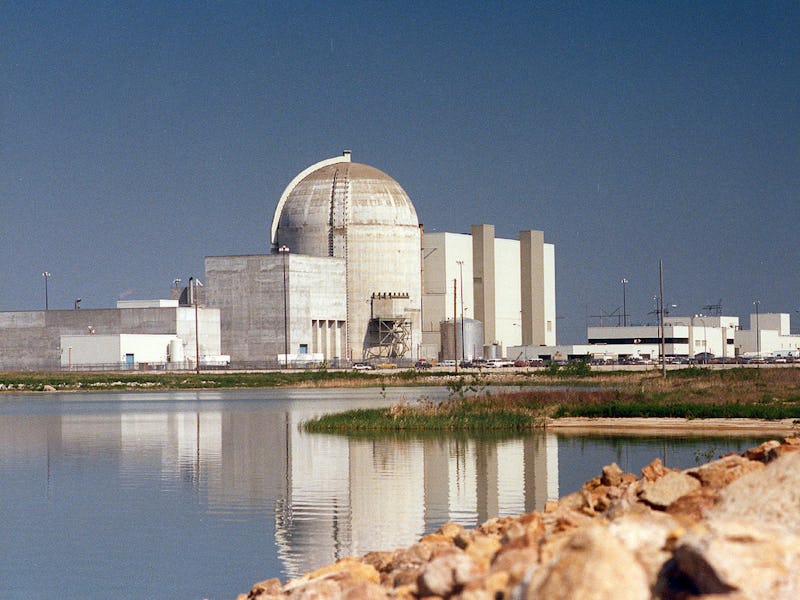What If There Were a Nuclear Meltdown in Kansas?
When there’s no place like home because home is a radioactive wasteland.

Wolf Creek 1 sits about a mile to the northeast of Burlington, Kansas, across the placid waters of Coffey County Lake, from which the nuclear plant draws its condensing liquids. It is not a dangerous place to be unless you are a sport fish; the bass fishing in the man-made lake is some of the best in the state. An NBC report put the odds of an earthquake strong enough to rattle the reactor so severely it melts down at one in 55,000 (the Nuclear Regulatory Commission told Inverse that this number is inaccurately high and has been replaced with a better assessment; plus, the agency says, post-Fukushima measures further lowered the odds of a seismic event becoming a cataclysm at Wolf Creek). But, being the B-movie monsters that we are, let’s roll those dice: What if Wolf Creek Plant up and went critical?
A meltdown typically begins when there’s damage to the cooling supply. Without water to keep the core from melting, or to maintain the 23-foot-deep pool that houses Wolf Creek’s spent uranium pellets, the reactor would overheat. Radioactive material would melt through the reinforced steel vessel. If the nuclear fuel puddle breaches its concrete shell, radiation can spew into the outside world. Once free, radiation loiters for years like a Kansas teenager outside a Quik Trip.
How bad is this for the Kansans nearby? The NRC asked that question before, when in 1982 it commissioned the Sandia National Laboratories to estimate the risk of each power plant in the U.S. melting down. The numbers were crunched and hypothetical people died en masse. But all told, the death toll from the simulated Wolf Creek meltdown was not as brutal as it would have been if it were closer to more humans. Per the Calculation of Reactor Accident Consequences-2 study: 1,000 early or immediate deaths would and 3,000 injuries would be followed by 3,000 deaths from cancer and a $250-billion cleanup.
Two caveats: Burlington, Kansas, in 2015 is not Burlington, Kansas, in 1982. The population has fallen from 2,900 in 1980 to under 2,700 in 2010. The NRC also later distanced itself from its early forays into disaster simulation, admitting that these simulations were “excessively conservative” and “badly out of date” as the agency refined its risk calculations. What’s the more accurate death toll? After Fukushima, according to the NRC, zero. Should the power to the power plant fail, there are portable pumps in place to take over. Moreover, reinforced safety systems mean that radioactive material should take at least a few days to work its way out, which the NRC believes is enough time for those in the Wolf Creek area to evacuate.
And again, just to be clear, the chance of this happening is orders of magnitude lower than the chance you’d be hit by lighting over your 80 years on this green earth. But, if it did happen, the trout fishing on Coffey County Lake would suck for roughly the next several thousand years. And so much for the Coffey County livestock sale. Why buy the cow when you can get the corpse for free?
“Wolf Creek is properly designed to handle the earthquakes that can be expected in Kansas,” points out NRC representative Scott Burnell.
Good to hear!
Previous Horrifying Unlikely Scenario: What If a Meteor Hit Connecticut?